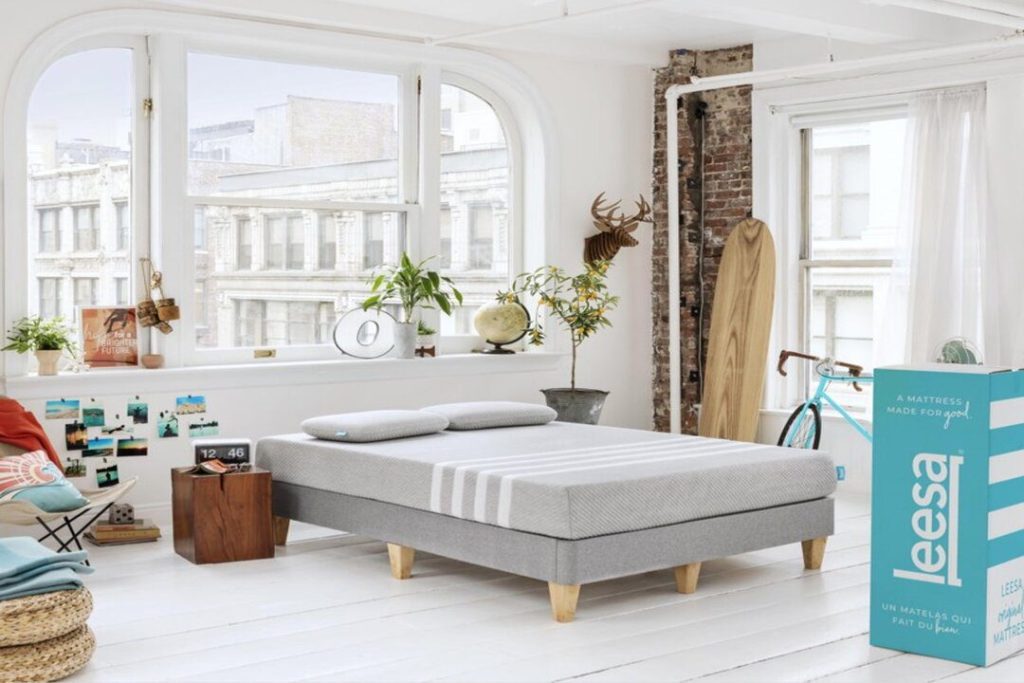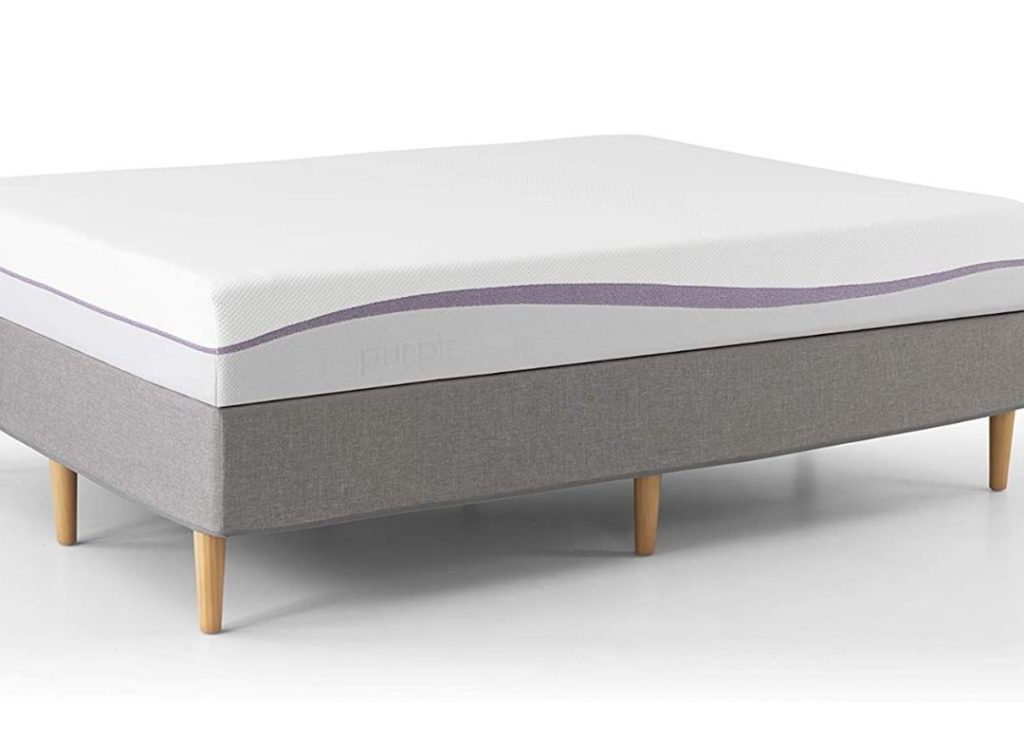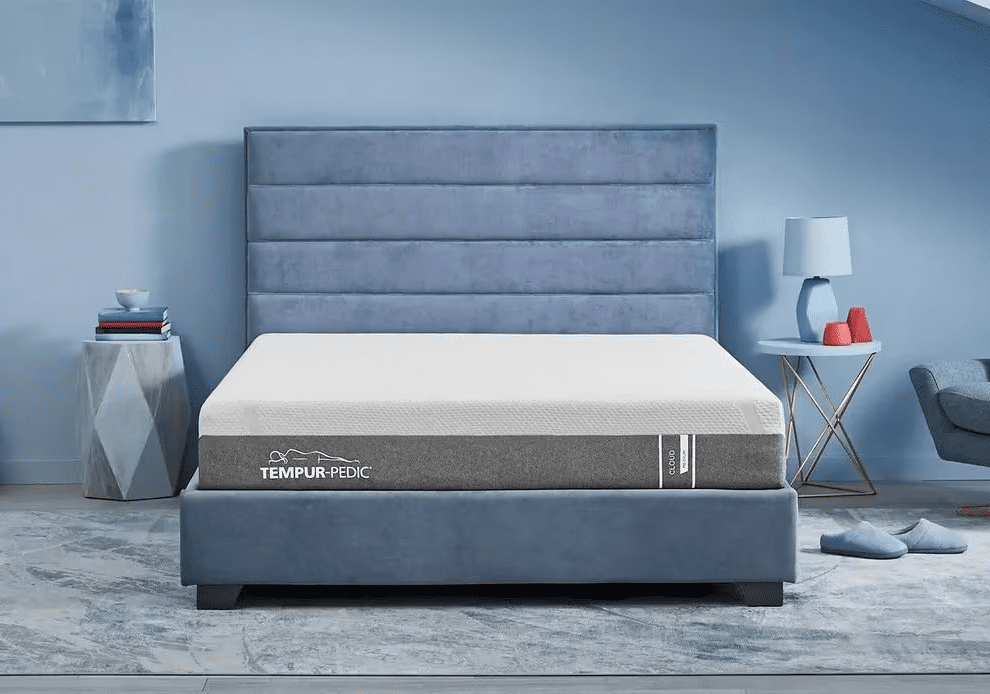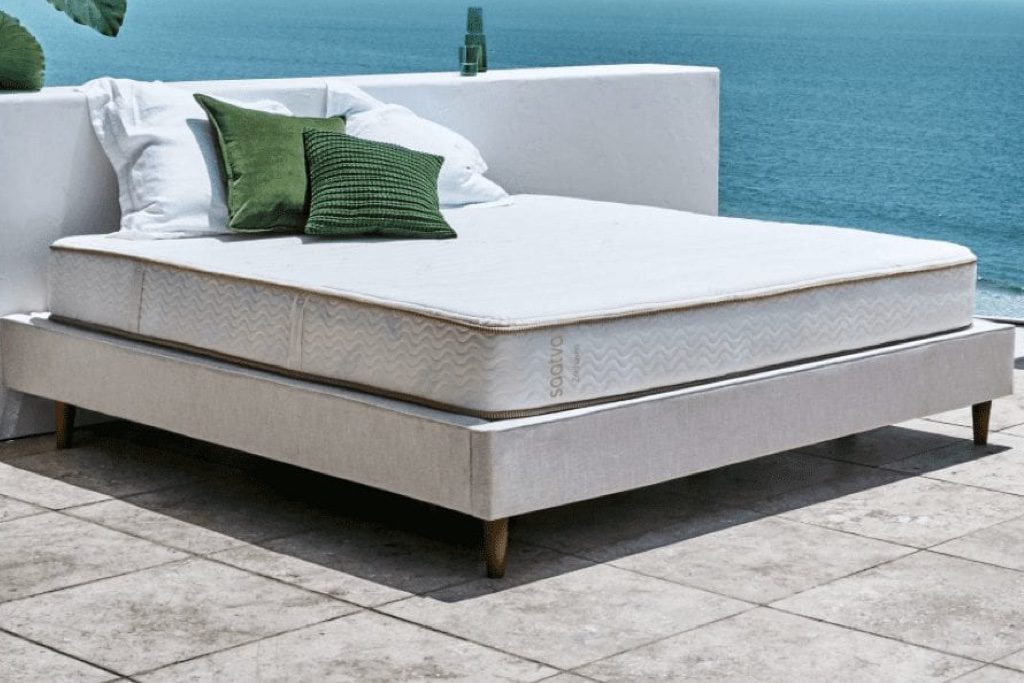I received a Hastens Bed as partial payment from Hastens to train their staff on the science of sleep and to assist their VIP clients.
When I tell you my bed costs $49,000, I know what you’re thinking: $49,000 on a mattress?
That’s what I originally thought, too. Even as someone who’s spent their life researching sleep, I’d always assumed that spending around two to four thousand was all anyone would ever need to spend to get a better nights’ sleep. And for some, that’s true.
But when I tried Hastens sleep system, all of my previous ideas about bedding, support, comfort, and stability changed. But before you write off a luxury price point the way I did, let me share with you my journey to trying out the Hastens sleep system, my six week trial, and what I learned about sleep, support, and even box springs.
Searching For The Best Mattress
I’ve always known that, when it comes to the best mattresses, to a certain point, you get what you pay for. Buy a mattress that costs well below two thousand dollars, and chances are you’re going to end up with a sore back over time.
Because I’d previously developed a mattress that was sold nationwide, I knew exactly what went into the best mattress and a good nights’ sleep. You’re probably aware of those basics: comfort, support and stability, with a little help from box springs.
While I eventually decided to pursue other projects, it was this experience that sparked my passion.
I started to appreciate how important materials and construction are, from supporting spinal alignment, to how they keep us cool.
What the average budget could get you seemed like enough. I’d never even considered a complete sleep system.
Then things started to change for my wife and me.
Memory Foam Mattress: Facing Limitations
Memory foam is a huge thing in the sleep industry, and that’s obvious whether you literally study sleep for a living, or you’re just shopping for yourself.
Through 2023, the market for memory foam mattresses, pillows and sleep systems is expected to grow by over 200 percent.
I was someone who not only bought into the memory foam mattress trend, but I was into it.
My wife started developing sleep issues from low back pain after experiencing four herniated discs so we invested in a popular, top of the line memory foam mattress.
For a while it worked. But then I started aging. My body changed. I lost weight.
The memory foam mattress, while once comfortable and helpful, began to lose its effectiveness. It seemed like, even as a sleep doctor, I’d reached the limitations of how much a good night’s sleep you could get from a memory foam mattress.
The Sleep Conference That Woke Me Up
I know it’s ironic. I spoke at a sleep conference–and I woke up. Not immediately, but this was the conference that shifted my perspective on mattresses, support, and why a sleep system like Hastens really could change the way I sleep and think about beds.
You could say I went in with an open mind–maybe because of my aching back. If there’s something I’ve learned about sleep and sleep science it’s this: research is always evolving, and so are ways to get better sleep.
When I met the owner of the Hastens store in LA, I was still skeptical. But he was accommodating. I accepted an invite to what he referred to as their “Sleep Spa.”
Immediately I noticed things that set the Hastens Sleep System apart.
I always knew that material and construction mattered, but with Hastens I didn’t need a sales pitch. I could see and feel the difference for myself—but I still wasn’t sure how much of a difference artisan materials and personalized support would actually translate.
After a series of conversations and demonstrations, the owner and I grew close. I got to know Hastens and ultimately they hired me to further educate their team about the science of sleep as well as consult with their VIP clients.
I agreed, but with one caveat: a bed was part of my compensation in lieu of cash. I paid because I wanted to get the full customer experience.
What I Learned During My First Six Weeks Using Hastens
Six weeks. That was how long I gave myself to try the Hastens sleep system. I’m glad I gave myself that long too because one of the biggest mistakes most people make when trying to select a mattress is giving up if it doesn’t immediately feel comfortable.
Of course, Hastens isn’t just a bed, it’s a complete sleep system, compiled of a mattress, box springs and topper. As I soon learned, it’s not only that Hastens is a complete sleep system, but the fact that it’s so different from your traditional box spring and mattress that would make giving it a longer trial that much more important.
To put it simply: it didn’t go well at first. If anything, the first week I woke up more. My back was still sore. I felt frustrated. But slowly, things started to change.
It’s a gradual change, a process you don’t immediately notice. Unlike with a memory foam mattress that immediately offers soft comfort, this support was something both personal to my body, and something that took getting used to.
By the end of six weeks, I was getting solid sleep, my awakening with back pain was gone, I had, fewer awakenings, and a completely changed perspective. And in fairness, we are still working on getting the exact right fit for my wife and her back pain but Hastens is with us every step of the way, helping us make small changes that definitely make a big difference.
To be clear, the customer service with this product is like nothing I have ever seen. We have been visited, had our system re-packed, and had adjustments made, and it has been wonderful. They will come back as many times as we want, and they are always knowledgeable and accommodating.
Here's What (Really!) Makes Hastens Different
Hastens is the oldest bed maker in the world, that historic knowledge of beds and bodies at rest makes them unique.
Once a skeptic, I can honestly now never imagine going back to a traditional box spring mattress or memory foam. Hastens sleep system took a while to grow on me, but that’s exactly what makes it so remarkable: a bed that’s personalized for you and your body.
But it’s not just me that’s had this experience; with low return rates, it seems like others are convinced too, that this is the only sleep solution for their bed they’ll need again. Here’s why:
Support and Sleep Posture
We often interchange the terms “support” and “comfort” but they’re actually two quite different things. Support refers to the spinal alignment and muscle relaxation, which allows your discs to expand, open up, and, ideally, prevent back pain.
In a typical memory foam mattress, the foam indents as you toss and turn, meaning from night to night, or even within the same night, you’ll get different levels of support depending on your sleep position. Memory foam reacts in response to heat transfer. So you don’t push memory foam down technically, it retreats from the heat in your body and doesn’t change until it cools down. That’s why so many people end up tweaking their back in a memory foam bed. They turn over expecting to find support only to unexpectedly find a hole and in many cases a strained back.
Not so with Hastens. The sleep system is unlike any other: it depresses and forms a unique profile of the sleeper, not incidentally, but purposely to align with your body and support your sleep posture. And unlike with memory foam, those personalized posture profiles remain, providing consistent support from night to night, providing your body a place to lie. It also means you move less because you are comfortably supported.
You don’t have to worry about a restless night changing your level of support. Backaches caused by poor spinal alignment at night subside, because the support is literally customized for your body.
Comfort
Comfort isn’t how soft or firm a mattress or sleep system is, but how long you’re able to remain in a supportive position. There’s actually a difference between sleeping in a bed, vs on a bed. Too many of us sleep on a bed, without getting the benefit of consistent support.
Since the Hastens sleep system is personalized to you, with true, responsive box springs, you get that consistency, and comfort levels over time make a huge difference in terms of both spine alignment and muscle support. The box springs for Hastens sleep systems are what help keep that position and hold it in a meaningful way–as opposed to merely reacting to changes in temperature and body heat.
An Entire System vs A Mattress
There’s also the difference between a mattress and a sleep system. The entry level King Size Bed starts at $22,980. Their top end bed, the Grand Vividus, owned by stars like Drake, costs over $590,000.
Each Hastens bed consists of three components.
You get not only a mattress but a true box spring with legs and a topper. That topper makes a difference, it’s specifically chosen layers of materials are what allows it to form to your body.I know you are probably curious about something I said earlier. With a full sleep system like Hastens, you don’t even need a typical bed frame. The box spring has legs and also acts as the platform we traditionally think of at the job of a bed frame.
Of course, you can just remove the legs and use your regular bed frame or keep them and mount a headboard to the wall if you want. The bed can also be purchased without the box springs so they had me try the bed on the floor to mimic the feeling of the mattress in a bed frame.
Materials
I think what struck me most about the Hastens sleep system was that it was not a marketing ploy–every little detail that goes into making it really impact my sleep.
Cotton and Wool
I always stress how important breathable materials are, and I’ve always preferred cotton to synthetics, because it helps you stay dry. Wool also helped: because it’s resistant to heat and water, it helped keep my wife and I cool during warm nights–and is going to come in handy during winter.
Swedish Pine
I know what you’re thinking: why should you care about the frame of your bed, or where it comes from? In this case, though, you just might: the wood grows at a slower rate than typical wood, and I noticed it felt sturdier, like it was built to last.
Flax and Horse Hair
Flax seemed like a strange choice–but for my wife and me, it meant less bed vibrations and less waking each other up.
Horse hair, though, was the one element I wasn’t sold on. My wife has some pretty bad allergies. But her allergies, I realized, were with pet dander, which isn’t a problem with washed horse hair. I love the springiness it provided, and the ability to wick away moisture so we didn’t wake up with night sweats.
Box Springs
Okay, I hope I’m not losing you here–but Hastens takes a unique approach with a dual spring system, using pocket and bonnell spring systems. Bonnell springs have an hourglass shape and provide stability, while the pocket springs are ultra sensitive to weight and move with your body. All springs in the sleep system are heat-treated steel, which retains elasticity over time. Translation? I had a far more comfortable, but also personalized sleeping experience.
I Was Wrong–In a Good Way
The Hastens Sleep System isn’t going to be price wise, for everyone.
But when I started out convinced that there was no way something that expensive could be worth it, I was wrong. Less back pain and the most personalized sleep experience is something neither my wife nor I can put a price on, or the fact that twice a year they come out to flip the mattress and massage the topper.
That means, no matter what changes my body goes through, I’ll continue to have a sleep system that fits me.
So were those first two weeks easy? No.
Am I glad I tried a $49,000 sleep system? You bet.
Ask the Sleep Doctor
Have questions about sleep? Submit them here! We use your questions to help us decide topics for future articles, videos, and newsletters. We try to answer as many questions as possible. You can also send us an email. Please note, we cannot provide specific medical advice, and always recommend you contact your doctor for any medical matters.










